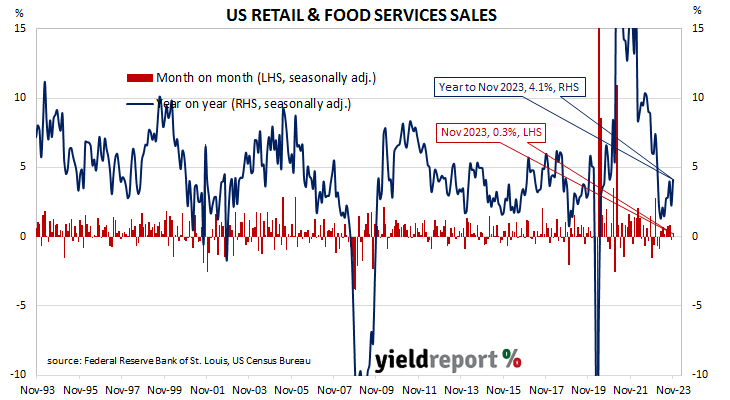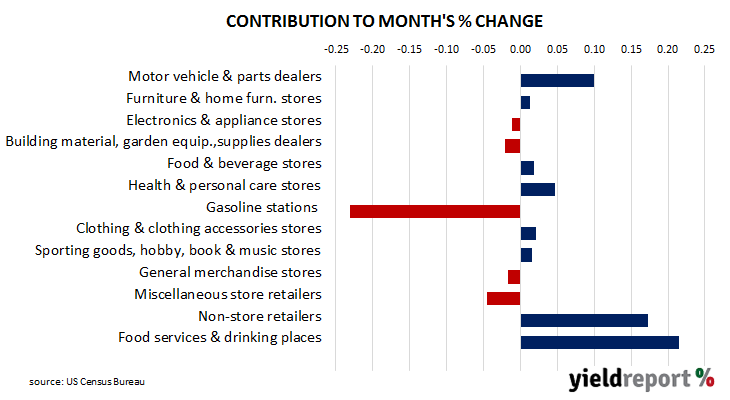Summary: US retail sales up 0.3% in November, rise contrasts with expected decline; annual growth rate accelerates to 4.1%; US Treasury yields down noticeably; 2024 rate-cut expectations firm; higher sales in eight of thirteen categories; gasoline station sales largest single influence on month’s result.
US retail sales had been trending up since late 2015 but, commencing in late 2018, a series of weak or negative monthly results led to a drop-off in the annual growth rate below 2.0%. Growth rates then increased in trend terms through 2019 and into early 2020 until pandemic restrictions sent them into negative territory. A “v-shaped” recovery then took place which was followed by some short-term spikes as federal stimulus payments hit US households in the first and second quarters of 2021.
According to the latest “advance” numbers released by the US Census Bureau, total retail sales increased by 0.3% in November. The rise contrasted with the 0.1% decrease which had been generally expected as well as October’s 0.2% fall after it was revised down from a 0.1% fall. On an annual basis, the growth rate accelerated from October’s revised rate of 2.2% to 4.1%.
US Treasury bond yields fell noticeably on the day. By the close of business, the 2-year Treasury yield had lost 6bps to 4.39%, the 10-year yield had shed 11bps to 3.92% while the 30-year yield finished 14bps lower at 4.04%.
In terms of US Fed policy, expectations of a lower federal funds rate in the next 12 months firmed. At the close of business, contracts implied the effective federal funds rate would average 5.33% in January, in line with the current spot rate, 5.225% in March and 4.89% in May. December 2024 contracts implied 3.95%, 138bps less than the current rate.
Eight of the thirteen categories recorded higher sales over the month. The “Gasoline stations” segment provided the largest single influence on the overall result, falling by 2.9% over the month and subtracting 0.23 percentage points from the total.
The non-store segment includes vending machine sales, door-to-door sales and mail-order sales but nowadays this segment has become dominated by online sales. It now accounts for nearly 17% of all US retail sales and it is the second-largest segment after vehicles and parts.



